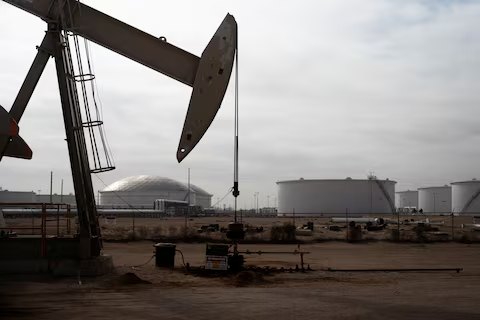Oil prices edged lower on Wednesday after an unexpected increase in U.S. crude inventories raised concerns over demand strength in the world’s largest oil consumer. The data offset supply fears driven by ongoing geopolitical tensions in the Middle East.
Brent crude futures fell 52 cents to $82.36 a barrel, while U.S. West Texas Intermediate (WTI) crude dropped 48 cents to $78.44 a barrel as of the close of trading. The decline followed a report from the American Petroleum Institute (API) showing that U.S. crude stocks rose by 2.5 million barrels for the week ending May 17—defying analysts’ expectations of a 3-million-barrel drawdown.
The surprise build in inventories suggested weaker-than-anticipated refinery activity or demand in the U.S., casting doubt on the strength of domestic consumption ahead of the summer driving season. Gasoline and distillate stockpiles also rose, reinforcing concerns of a potential demand slowdown.
“The API data caught markets off guard,” said Vandana Hari, founder of oil markets consultancy Vanda Insights. “Investors are recalibrating expectations around U.S. fuel demand resilience.”
The bearish inventory news was further compounded by cautious sentiment around China’s economic momentum. While recent stimulus measures in Beijing have helped stabilize some markets, traders remain skeptical about the pace of recovery in the world’s second-largest oil consumer.
Still, geopolitical risk continues to lend some support to prices. Escalating conflict between Israel and Iranian-aligned groups in the Middle East, including a recent missile attack from Yemen, has kept traders alert for any disruptions to oil supplies. So far, no direct threat to production or major shipping lanes has materialized, but analysts warn the situation remains fluid.
“Geopolitical tension is keeping a floor under prices, but the fundamental picture is showing signs of softening,” said Warren Patterson, head of commodities strategy at ING.
Market attention is now turning to the upcoming meeting of the OPEC+ alliance, scheduled for early June. The group is expected to discuss whether to maintain or adjust its current voluntary production cuts amid mixed signals from the global demand outlook.
OPEC+ has trimmed output by more than 2 million barrels per day since late 2022 in a bid to support prices. While some members have signaled a desire to maintain cuts, others are under fiscal pressure to boost revenues through higher export volumes.
Additionally, traders await official inventory figures from the U.S. Energy Information Administration (EIA), which will be released later on Thursday. A confirmation of the API’s reported stock build could exert further downward pressure on prices.
Despite the recent dip, oil markets remain relatively stable within a narrow trading range, reflecting the balancing act between macroeconomic uncertainty and geopolitical volatility.
“The market seems to be in a wait-and-see mode,” said Edward Moya, senior analyst at OANDA. “There’s a tug-of-war between weak demand indicators and fears of supply shocks. Until one side breaks decisively, prices are likely to drift sideways.”
As summer approaches, all eyes will be on demand indicators from the U.S. and China, OPEC+ policy signals, and the evolving situation in the Middle East—all key drivers that will shape the next direction for global oil markets.
Source: Reuters



